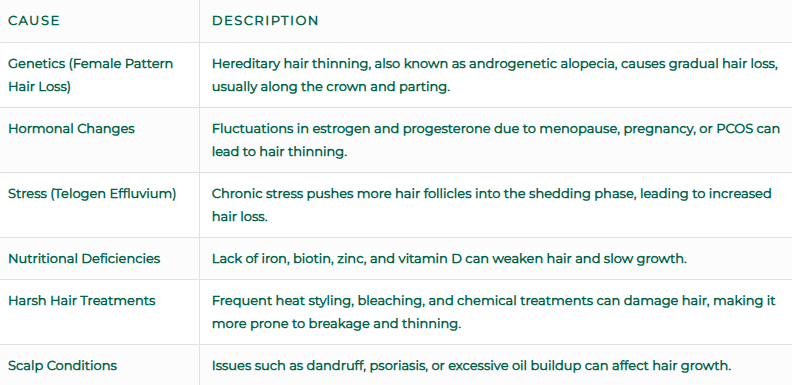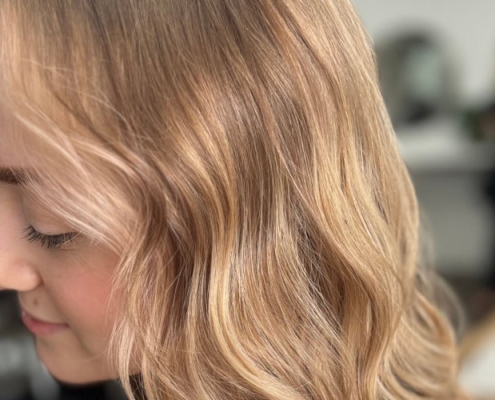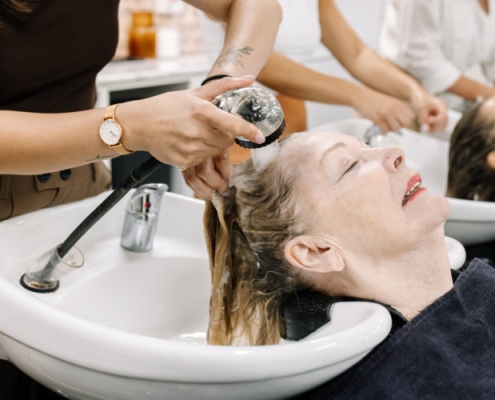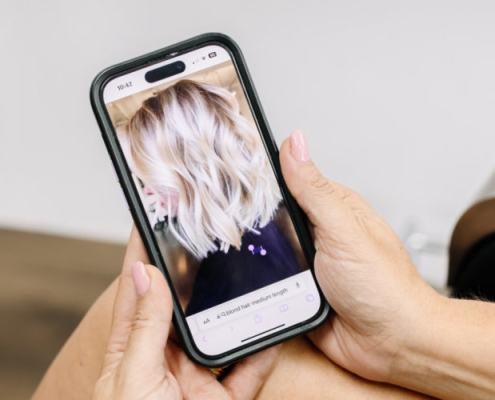Thinning Hair in Women: How to Prevent and Manage It
Thinning hair is a common issue that affects many women, regardless of age. Whether caused by genetics, hormonal imbalances, stress, or lifestyle factors, hair thinning can be distressing. The good news is that there are effective ways to prevent and manage hair thinning by understanding its causes, making targeted lifestyle changes, and using the right treatments.
This guide explores the causes, prevention methods, and management strategies for thinning hair in women, with expert advice on how to maintain fuller, healthier locks.
Understanding Hair Thinning in Women
Women experience hair thinning differently from men. While men often develop receding hairlines and bald spots, women tend to experience diffuse thinning, where hair becomes noticeably sparse across the scalp, especially along the parting.
Common Patterns of Female Hair Thinning
- Gradual thinning along the part: A wider parting is often the first noticeable sign.
- Decreased hair volume: Hair appears less dense and struggles to hold styles.
- Increased shedding: More hair is found on pillows, brushes, and in the shower.
To learn more about the different causes of hair thinning, visit Why Is My Hair Thinning? Common Causes and Solutions.
Causes of Thinning Hair in Women
Several factors contribute to hair thinning in women. Understanding the root cause is the first step toward effective prevention and treatment.

How to Prevent Hair Thinning
Preventing hair thinning requires a combination of a healthy lifestyle, gentle hair care practices, and proper nutrition. Below are actionable steps women can take to maintain strong, voluminous hair.
1. Eat a Nutrient-Rich Diet
Hair health starts from within. A diet rich in iron, biotin, omega-3 fatty acids, and protein is essential for hair growth.
- Iron-rich foods: Spinach, lentils, red meat
- Biotin sources: Eggs, almonds, sweet potatoes
- Omega-3 fatty acids: Salmon, walnuts, flaxseeds
- Protein sources: Chicken, tofu, Greek yogurt
For a detailed breakdown of essential nutrients for hair health, visit Thinning Hair and Diet: Nutrients You Need for Stronger Strands.
2. Use Gentle Hair Care Products
Avoid harsh shampoos that strip hair of its natural oils. Instead, choose sulphate-free, gentle shampoos designed for thinning hair.
- Use volumizing shampoos to add body without weighing hair down.
- Apply lightweight conditioners to prevent hair from looking limp.
- Avoid excessive heat styling and use heat protectant sprays.
3. Get a Flattering Haircut
The right hairstyle can create the illusion of thicker hair. Some of the best haircuts for thinning hair include:
- Blunt bob: Keeps the ends full for a denser appearance.
- Layered lob: Adds movement and prevents hair from looking flat.
- Side-swept fringe: Conceals thinning areas around the hairline.
For more styling inspiration, check out Best Hairstyles for Thinning Hair to Add Volume.
4. Reduce Stress
Since stress is a major contributor to hair thinning, managing stress levels can help minimize hair loss. Consider:
- Practising meditation and deep breathing to lower stress hormones.
- Engaging in regular physical activity to improve circulation.
- Prioritizing quality sleep to support hair regeneration.
How to Manage Thinning Hair
Managing thinning hair requires a multi-faceted approach that includes scalp care, hair-strengthening products, medical treatments, and expert styling techniques. While thinning hair can be distressing, there are effective strategies to minimize hair loss, improve scalp health, and create the appearance of thicker hair.
Below, we’ll explore the best ways to manage thinning hair, from at-home care to professional treatments, so you can regain confidence and keep your hair looking its best.
1. Scalp Care: The Foundation for Healthy Hair Growth
Healthy hair starts with a healthy scalp. A clean, well-nourished scalp creates the perfect environment for strong hair growth by keeping follicles clear and stimulating circulation.
How to Maintain a Healthy Scalp
- Use a gentle, sulfate-free shampoo: Harsh shampoos strip the scalp of natural oils, making hair more prone to breakage.
- Exfoliate your scalp weekly: Build-up from products, dead skin cells, and oil can clog follicles. Use a scalp scrub or gentle exfoliating brush to remove residue.
- Massage your scalp daily: Scalp massages stimulate blood flow, encouraging nutrients to reach hair follicles and promoting growth.
- Hydrate your scalp: Dry scalp conditions like dandruff, psoriasis, or seborrheic dermatitis can hinder hair growth. Use a hydrating scalp serum or lightweight oil to maintain moisture.
Best Scalp Treatments for Thinning Hair
- Minoxidil (Rogaine): This over-the-counter topical treatment is FDA-approved to stimulate hair follicles and slow hair loss.
- Rosemary and Peppermint Oil: Research shows that essential oils like rosemary increase circulation in the scalp, promoting hair growth naturally.
- Tea Tree Oil: Known for its antimicrobial properties, tea tree oil keeps the scalp healthy and free from fungal infections that can contribute to hair loss.
- Caffeine-Based Scalp Serums: Caffeine helps block DHT, a hormone associated with hair thinning, while stimulating the roots.
2. Strengthening Hair with the Right Products
Using the right hair care products can strengthen thinning hair, reduce breakage, and improve texture.
Best Products for Thinning Hair
- Volumizing Shampoos: Look for formulas with biotin, keratin, and amino acids to strengthen strands and add body.
- Lightweight Conditioners: Avoid heavy, oil-based conditioners that weigh hair down. Instead, use light, water-based formulas.
- Leave-In Thickening Sprays: Products containing niacinamide and panthenol coat each strand, creating a fuller appearance.
- Protein Hair Masks: A keratin-infused mask once a week can help reinforce weakened hair fibers.
3. Hair Styling Tips to Create the Illusion of Thicker Hair
Styling techniques can make a huge difference in how thinning hair appears. Choosing the right haircut and volume-enhancing tricks can make hair look much fuller.
Best Haircuts for Thinning Hair
- Blunt Bob: A sharp, one-length cut adds weight and density to thin strands.
- Layered Lob: Soft, subtle layers create movement and volume without making hair look too wispy.
- Side-Swept Fringe: These help cover thinning areas at the temples and forehead.
For a complete list of styles that enhance volume, check out Best Hairstyles for Thinning Hair to Add Volume.
Styling Tips for a Fuller Look
- Change Your Part: A deep side part adds instant lift at the roots.
- Use Dry Shampoo: Dry shampoo adds texture and grip, making hair appear thicker.
- Blow-Dry Upside Down: Flip your head over when drying to add volume at the roots.
- Try Velcro Rollers: These create long-lasting volume without heat damage.
4. Professional Treatments for Thinning Hair
If at-home treatments are not yielding results, consider professional hair loss treatments.
Medical Treatments for Hair Thinning
- Platelet-Rich Plasma (PRP) Therapy: Uses growth factors from your blood to stimulate dormant hair follicles.
- Low-Level Laser Therapy (LLLT): Laser light increases circulation and cell activity in the scalp.
- Hair Transplant Surgery: Involves moving healthy hair follicles to thinning areas.
Find out when to seek expert advice here: Is It Time to See a Specialist for Your Thinning Hair?.
5. Boosting Confidence While Managing Thinning Hair
Thinning hair can take a toll on self-esteem, but there are ways to maintain confidence:
- Experiment with clip-in extensions or hair toppers for an instant volume boost.
- Choose root-concealing powders to camouflage scalp visibility.
- Find a hairstylist who specializes in thin hair-friendly cuts and styles.
For additional confidence-boosting strategies, check out How to Boost Confidence When Dealing with Thinning Hair.
Final Thoughts
Managing thinning hair requires a combination of proper scalp care, strengthening treatments, professional guidance, and smart styling techniques. By taking a proactive approach, women can maintain fuller, healthier hair and feel confident in their appearance.
If you need expert haircut solutions, explore our Haircuts and Styling Services.











